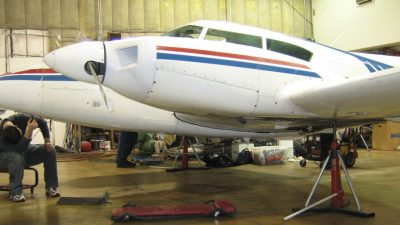Buying an airplane is a thrilling experience, but it’s also a significant investment that requires careful consideration. With more options and resources available than ever before, finding the right plane for your needs can be easier—but also overwhelming if you don’t know what to look for. Here’s a guide to help you make an informed decision and avoid common pitfalls when purchasing your first aircraft.

Step 1: Determine What You Really Need
Before diving into the purchase, clarify what you need versus what you want in an aircraft. This will help you avoid overspending on features that may look attractive but add unnecessary costs. Consider the following:
- Seats: Do you need a 2, 4, or 6-seater? If most flights will just be you and a passenger or two, a 4-seat aircraft will do. For larger groups, a 6-seat aircraft might be worth the cost.
- Trip Length: Will you mainly be flying locally or taking frequent cross-country trips? Aircraft optimized for shorter distances, like a Cessna 172 or Piper Warrior, are typically more cost-effective than faster, long-range options like a Cirrus SR22 or Beechcraft Bonanza.
- Speed and Performance: Speed can be enticing, but it comes at a premium. High-performance aircraft often have higher maintenance and fuel costs, so be sure a faster aircraft aligns with your budget and mission.
Step 2: Set a Budget and Stick to It
Aircraft prices vary greatly depending on age, condition, and features. Here’s an updated look at potential costs:
- Basic Used Aircraft: A well-maintained used 1977 Cessna 172 might go for around $45,000–$65,000. However, if you want a newer model with more advanced avionics, such as a 2000 Cessna 172, you’re looking at closer to $150,000–$175,000.
- New Aircraft: A brand-new 2024 Cessna 172 costs around $470,000–$500,000. Financing options can make this achievable for some buyers, but be prepared for monthly payments over $4,000 with a typical 20% down payment and a 6% interest rate.
Regardless of your budget, avoid being tempted by luxury options that go beyond your actual needs. Set a clear spending limit and try to account for ongoing costs like insurance, maintenance, and fuel.
Step 3: Decide Between New and Used
When choosing between new and used aircraft, consider the following factors:
- New Aircraft: Comes with a manufacturer’s warranty, modern avionics, and no previous wear and tear. However, the initial cost and insurance rates are significantly higher.
- Used Aircraft: Often available for a fraction of the cost, with some well-maintained models offering excellent value. However, a used aircraft may come with hidden maintenance needs, so factor in potential repair costs.
Financing options vary based on the aircraft’s age and price, so check loan options if you plan to finance. For example:
- A $50,000 loan at 6% over 10 years with 20% down will cost about $440 per month.
- For a $150,000 loan, monthly payments would be around $1,300.
Step 4: Know Where to Search
Airplanes are bought and sold across a range of platforms. Here are some great places to start:
- Local Airport Bulletin Boards: Check with your local airport for listings; you might find a good deal close to home.
- Online Listings:
- Aircraft Brokers: If you’re new to the process or have specific requirements, a broker can help navigate listings, negotiate pricing, and arrange inspections.
Step 5: Take a Test Flight
Once you’ve found a plane that meets your needs and budget, schedule a test flight. Pay attention to comfort, handling, and any unusual noises or vibrations. Consider bringing along a certified instructor or experienced pilot who can provide additional feedback.
Step 6: Conduct a Pre-Buy Inspection
A pre-buy inspection by a certified mechanic is essential before finalizing your purchase. This inspection includes a thorough review of logbooks, maintenance history, and a detailed examination of the airframe, engine, and avionics. Make sure the mechanic is not associated with the seller to ensure an unbiased assessment.
A pre-buy inspection can uncover costly issues, such as corrosion, that may not be immediately visible. Neglecting this step could lead to unexpected repair bills and buyer’s remorse.
Step 7: Completing the Purchase
The final steps include drafting a purchase agreement and handling payment. An aircraft broker or aviation attorney can guide you through the legal details, including title searches, lien checks, and proper documentation with the FAA. They can also help with securing financing, transferring ownership, and registering the aircraft in your name.
Additional Tips for First-Time Buyers
- Maintenance Budget: Beyond purchase costs, plan for annual maintenance, which can range from $1,500 to $10,000 or more, depending on the type of aircraft.
- Insurance Costs: Insurance premiums vary by aircraft type, value, and pilot experience. Expect to budget around $1,000–$5,000 per year.
- Hangar or Tie-Down Fees: Depending on your location, hangar fees can cost anywhere from $200 to $1,000+ per month. Tie-downs are typically cheaper but offer less protection from the elements.
Buying an airplane can be one of the most rewarding investments you make, provided you approach the process carefully. With a clear understanding of your needs, a set budget, and the right professional assistance, you’ll be able to take to the skies with confidence in your own plane.
Happy flying!



